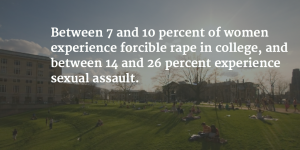
This month in the media, Council on Contemporary Families (CCF) scholars made some good points about how social context contributes to the diversity of families and relationships in the United States and abroad.
TIME: Marriage rate decline over time yet strong relationships increase
The University of Texas Daily Beacon covered a popular issue – Millennial sex and dating. Media often latches on to (decontextualized) statistics about lower marriage rates of millennials, tsk-tsk-ing all the way. But the UT Daily Beacon pointed out some less-talked-about generational differences. More millennials are “sexually inactive” at age twenty, for instance, than those born in the 1980s. And, even though millennials might have lower marriage rates, there is reason to believe that they have closer relationships than those of previous generations with higher marriage rates. Stephanie Coontz suggests (as she has elsewhere) that this is in part due to rising gender equality that has empowered many women to resist coercive relationships.
PLACE: Around the world and around the U.S. great varieties and change in divorce
The BBC recently discussed the current state of “Divorce in the Islamic World,” where divorce activists are pushing for reform because of the inherent gender inequality in many divorce laws. To unfamiliar listeners, thinking about divorce in the Islamic world may be exotic. But Stephanie Coontz shows that there has been variation in divorce practices – and their impact on family life – by place within the United States, too. States adopted no-fault divorce individually starting during the 1970s, and up until 2010 in New York. This makes it possible to determine that despite initially high divorce rates following the adoption of no-fault divorce, divorce rates tend to decrease in the long-term. Fewer instances of domestic violence and suicides by wives are also related to the adoption of no-fault divorce. Coontz suggests that many of the problems people associate with divorce are not necessarily caused by divorce as much as caused by the stigmatization of divorce.
RACE & CLASS: Not family structure
NPR further illustrates the way that immutable contextual factors can impact family outcomes: “Black and Latino Two-Parent Families Have Half the Wealth of White Single Parents.” The report discussed on NPR references a CCF brief report by Philip Cohen, Heidi Hartmann, Chandra Childers, and Jeffrey Hayes. In “Moynihan’s Half Century: Have We Gone to Hell in a Handbasket?” Cohen, Hartmann, Childers, and Hayes discussed how, since 1965, anti-poverty efforts have mistakenly focused on changing individual behaviors, like getting black single mothers to get married. The much larger source of much economic inequality, find these studies, is racial inequality. Poor families often have lower rates or marriage because of economic inequality. Coontz, in her BBC interview, cautions against using blanket statements that almost half of married couples divorce. Those who are highly educated and who put off marriage – who tend to be wealthier – have significantly lower divorce rates.
The take-away? The theme is family diversity and family change. The evidence supports it. Ignore at our peril. Policy that draws on the “mythical” traditional family is not going to work if the goal is to reduce inequality in all these elements of family: generation, place, race, and class (and many others, too!)
Braxton Jones is a graduate student in sociology at the University of New Hampshire, and serves as a CCF Graduate Research and Public Affairs Scholar.











